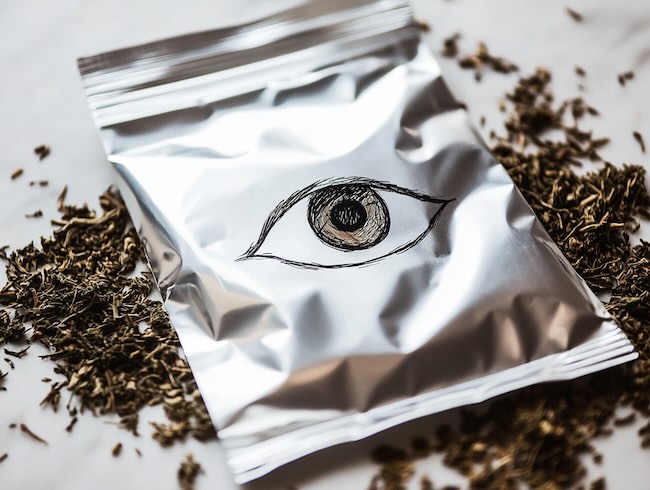What is K2 Drug?
K2 spice drug, commonly referred to as synthetic marijuana or spice, is a man-made drug which just resembles the effects of THC, which is the active substance that causes euphoria in cannabis. Deceptively presented as a “legal high” nonetheless, K2 is dangerous and synthetic compound sprayed with chemicals that is dangerous for human consumption and human health.
According to Dr. Nora Volkow, Director of the National Institute on Drug Abuse (NIDA), “The unpredictable composition of K2, combined with its potency, has led to severe health consequences, including psychosis, seizures, and even death.” Unlike natural cannabis, K2 is sprayed with synthetic chemicals that bind aggressively to cannabinoid receptors in the brain. Research published in the Journal of Medical Toxicology highlights that these unregulated compounds can produce harmful and sometimes life-threatening effects, underscoring the critical risks associated with K2 use.
We talked about What is K2 drug? in our podcast episode. Listen to learn more about What K2 drug is.
Why Is K2 Spice Dangerous?
Unlike natural cannabis, K2 spice chemical makeup is unregulated and constantly changing. This variability means users can never be certain about what they are consuming. Research published in the Journal of Medical Toxicology highlights that many batches of K2 contain harmful substances, including synthetic compounds far more potent than THC. These compounds can cause severe adverse effects, such as:
- Acute psychosis: Hallucinations, paranoia, and delusions.
- Physical symptoms: Seizures, rapid heart rate, vomiting, and chest pain.
- Behavioral risks: Aggression, self-harm, or violent outbursts.
- Long-term impacts: Kidney damage, cognitive impairments, and potential heart complications.
Dr. Emily Carter, an addiction specialist, warns, “K2 is a highly unpredictable substance. The lack of regulation and the intensity of its effects make it much more dangerous than cannabis or other commonly abused drugs.”
How Is K2 Spice Marketed and Consumed?
K2 is often sold in brightly colored packaging with names like “Cloud 9,” “Blaze,” or “Scooby Snax,” targeting younger demographics. These products are usually available in gas stations, smoke shops, or online under the guise of being “safe” or “legal.”
Users typically consume K2 by:
- Smoking it in rolled joints or pipes.
- Brewing it as tea.
- Vaping it using e-cigarettes.
Its accessibility and low cost make K2 particularly appealing to teenagers and individuals seeking to evade detection on drug tests, as many standard screenings do not identify synthetic cannabinoids.
What Are the Signs of K2 Spice Drug Use?
Recognizing the signs of K2 use is critical for early intervention. Symptoms can include:
- Unpredictable behavior: Extreme mood swings, agitation, or paranoia.
- Physical symptoms: Bloodshot eyes, excessive sweating, and tremors.
- Mental health changes: Anxiety, confusion, or hallucinations.
- Poor coordination: Slurred speech and difficulty walking.
If you suspect someone is using K2, encourage them to seek medical or professional help immediately.
Synthetic Marijuana vs. Natural Cannabis: Key Differences
When comparing K2 (synthetic marijuana) and natural cannabis, it’s essential to understand their key differences in composition, effects, and risks. While both substances interact with the brain’s cannabinoid receptors, the synthetic nature of K2 introduces unpredictability and significantly higher health risks. In contrast, natural cannabis has a well-documented safety profile in regulated settings.
| Aspect | K2 (Synthetic Marijuana) | Natural Cannabis |
|---|---|---|
| Chemical Composition | Lab-made chemicals, often unknown | Naturally occurring THC and CBD |
| Potency | Highly unpredictable, often stronger | Generally consistent levels of THC |
| Side Effects | Severe and dangerous | Milder and more manageable |
| Regulation | Unregulated and illegal in many places | Heavily regulated in legal states |
| Addiction Potential | High risk due to potency | Moderate risk with chronic use |
Dr. Nora Volkow of NIDA emphasizes, “The appeal of synthetic cannabinoids like K2 stems from their misleading marketing, but the risks far outweigh any perceived benefits.”
The Risk of K2 Drug Addiction
Synthetic cannabinoids, including K2 drug, have a high potential for addiction. Users often develop tolerance, requiring larger doses to achieve the same effects, leading to dependency. Withdrawal symptoms can include:
- Intense cravings
- Irritability
- Depression
- Insomnia
According to the Journal of Addiction Medicine, people addicted to K2 often face more intense and challenging withdrawal symptoms than those associated with natural cannabis, making specialized treatment essential for recovery.
Is K2 Really a Drug?
Yes, K2 is undeniably a drug, and a really dangerous one. Despite being marketed as a “safe” and “legal” alternative to marijuana, it is neither safe nor always legal. The chemical compounds in K2 are frequently illegal and can differ significantly between each batch, making its effects unpredictable and highly dangerous.
Seeking Help for K2 Addiction
If you or a loved one is struggling with K2 addiction, professional help is essential. At Still Detox Luxury Rehab, we provide evidence-based care tailored to synthetic drug addiction, offering:
- Detoxification services: Safely manage withdrawal symptoms under medical supervision.
- Behavioral therapies: Address the psychological roots of addiction with CBT and DBT approaches.
- Holistic programs: Incorporate mindfulness, yoga, and stress management techniques for sustained recovery.
- Family counseling: Rebuild trust and support systems.
Final Thoughts on K2 Drug
K2 is not a safe or legal alternative to cannabis. Its unpredictable effects and lack of regulation make it one of the most dangerous synthetic drugs available today. As awareness grows, it’s critical to prioritize education and intervention to reduce the harms associated with K2.
If you or someone you know is affected by K2 use, contact Still Detox Luxury Rehab at (561) 556-2677 for immediate assistance. Recovery is possible with the right support and treatment.








